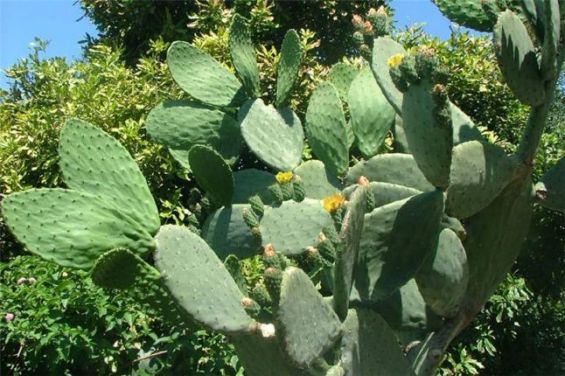Opuntia Ficus-indica is the scientific word for a very unique species of cacti. The plant which is believed to be originated from Mexico has somehow made its way to Morocco. Indian fig in English, nopal in Mexican Spanish Handia in Moroccan Arabic and Taknarit in Berber, the fruit has gained so much popularity in the Moroccan culture. It is everywhere and in the streets of every city in the Kingdom where vendors sell it to passer buys.
One of its main characteristics is that it mostly grows as a fruit crop. Cacti can survive hot environments because they can perfectly convert water into biomass, an organic material that comes from plants and animals, and it is considered as a renewable source of energy. Ficus-indica belongs to the Opuntia species that grow in semi-arid areas. The plant mostly appears in early May while fruits occur through August up to October.

Affected by parasites
The fruit takes part of the Moroccan culture as well. According to a communiqué issued on 15th of July 2017 by the Ministry of Agriculture, Sea Fishery, Rural Development, Water Bodies & Forests, «Cactus cultivation currently covers an area of 160,000 hectares, particularly in the regions of Marrakech-Safi, Casablanca-Settat and Guelmim Oued Noun». Unfortunately, the Ministry reports that since 2015, Fiscus-indica was dramatically infected for the first time in Sidi Bennour by cottony cushion scale, an insect that grows beneath wax covers. The latter is a parasite of plants, feeding directly on their vascular system.
However, the insect «known by the rapidity of its extension» has reached other vital regions where the fruit is one of the major agricultural products. The ministry indicated in the same statement that currently these parasites «cover a large area, especially in the regions of Sidi Bennour, Rhmana, Settat, El Jadida and Safi».

The plan of the Ministry of Agriculture
To fight against the problem the Ministry of Agriculture chaired a meeting earlier on July 2017. The conference was attended by The minister of Agriculture, Sea Fishery, Rural Development, Water Bodies & Forests, Aziz Akhannouch, the National Office for Food and Sanitary Security (ONSSA), the National Institute of Agronomic Research ( INRA) and the National Office of the Agricultural Council (ONCA). «Nearly 500 million Dh have been invested in the development of the cactus sector, in particular for the planting of more than 40,000 hectares, the development of runways, the construction and equipments for 8 recovery units», states the Ministry.
Other procedures were put forward since then by the Ministry which include burning and burying the heavily infested plants, developing a scientific plan to fight against the insects and protecting the cacti that have not been touched. As well as constructing a security fence as a shield for the plants in different regions to avoid contamination.
A budget of 80 million dirhams has been dedicated to applying this plan. The Ministry has also given ONCA instructions to raise awareness among farmers to fight against the insects.

«Taknarit» in other regions
However there are some places where, Ficus-indica is still safe and sound. The example is in the municipality of Chtouka Ait Baha, and most precisely in a mountainous village named Doudad. Speaking to Mhamed a farmer and resident of Doudad, he told Yabiladi that «Taknarit» as locals call it has not been affected by the insects. «We have seen everywhere on TV and heard about these parasites but hopefully the ones that grow in our village are good», Mhamed explained.
For the small village located in Souss Massa Daraa, Indian figs grow every year from June to August. «Locals like to collect the Indian figs during July, it is at that time that it tasts the best», Mhamed said adding that «although the region is known for Argan and almend, Taknarit remains a great source of energy». The seasonal fruit that appears one time a year can be benefited from for a longer amount of time. According to Mhamed «we have different ways of eating the Indian figs. We can dry them and save them for later or make a juice out of them and extract the seeds inside». Apparently these cacti can also serve as food for animals as Mhamed told Yabiladi. «Beside the fruit, we also dry the plant and give it as a nutritious kind of food to animals», Mhamed concluded.
To check on the plan applied to protect the Moroccan Ficus-indica, Yabiladi contacted the Ministry of Agriculture. The latter insured that the plan «is currently in use».





 chargement...
chargement...
















